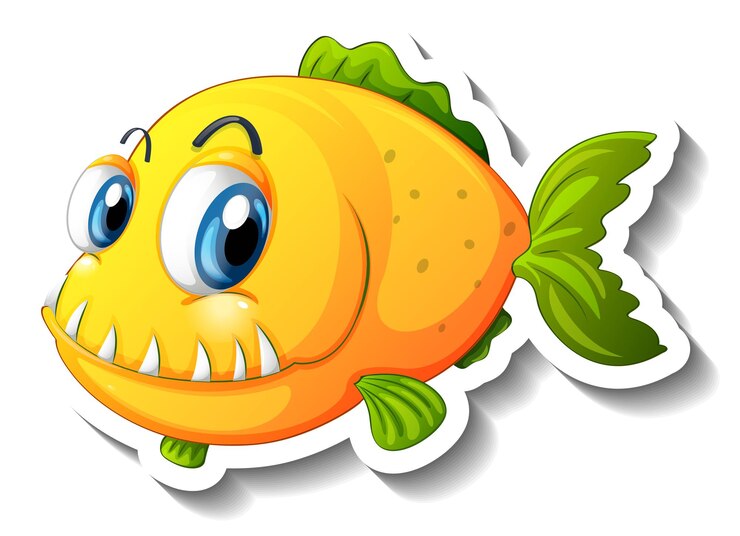
Fish have been beloved companions for centuries, admired not only for their beauty but also for the calming effect they have on their owners. Among the diverse world of aquatic life, the DVQL5N9V310= fish has emerged as a favorite, captivating both novice and experienced aquarists alike. This article delves into everything you need to know about these cute little fish, including their characteristics, care requirements, and the benefits of keeping them as pets.
What Are DVQL5N9V310= Fish?
The term “DVQL5N9V310= fish” is a unique identifier that highlights a specific variety of fish known for its playful and charming qualities. While this name may not correspond to a scientifically recognized species, it evokes an image of small, vibrant fish that are ideal for community aquariums. Typically, these fish are characterized by their vivid colors, unique patterns, and engaging behaviors, making them a delightful addition to any home.
The Charm of DVQL5N9V310= Fish
What truly sets DVQL5N9V310= fish apart is their personality. These fish are known for their lively antics, often darting around the tank and interacting with one another. They are curious creatures, often exploring their surroundings with enthusiasm. Their playful nature can provide endless entertainment, making them a joy to observe.
Characteristics of Cute DVQL5N9V310= Fish
Appearance
DVQL5N9V310= fish are typically small, ranging from 1 to 3 inches in length. Their bodies are often adorned with bright colors, including shades of blue, red, yellow, and green, accompanied by intricate patterns that can vary widely among individuals. This striking appearance not only makes them visually appealing but also adds a splash of color to any aquarium.
Behavior
In addition to their captivating appearance, these fish are known for their social and active behavior. They thrive in groups and are often seen swimming together in schools, which not only enhances their social interactions but also makes for a more dynamic and lively tank environment. Observing their playful interactions can be a delightful experience, showcasing their intelligence and curiosity.
Compatibility
DVQL5N9V310= fish are generally peaceful and can coexist harmoniously with a variety of other small fish species. Their friendly nature allows them to integrate well into community tanks, provided that care is taken to choose compatible tank mates. However, it is important to monitor interactions, as overly aggressive species can cause stress or harm to these delicate fish.
Care Tips for DVQL5N9V310= Fish
Caring for DVQL5N9V310= fish is relatively straightforward, making them an excellent choice for both beginners and seasoned aquarists. Here are some essential care tips to ensure your fish remain happy and healthy:
1. Tank Setup
Creating a suitable environment for DVQL5N9V310= fish is crucial for their well-being. A tank size of at least 20 gallons is recommended for a small school, allowing ample swimming space. The aquarium should be decorated with live or artificial plants, rocks, and hiding spots to mimic their natural habitat. A well-structured environment not only provides shelter but also encourages natural behaviors.
2. Water Quality
Maintaining high water quality is essential for the health of DVQL5N9V310= fish. Regular water changes (about 20-30% weekly) are recommended to keep the water clean and free of harmful toxins. Utilize a reliable filtration system to ensure the water remains clear and well-oxygenated. Testing the water parameters, including pH, ammonia, nitrite, and nitrate levels, will help you keep the conditions ideal for your fish.
3. Temperature and pH Levels
DVQL5N9V310= fish thrive in specific temperature and pH ranges. Aim for a water temperature between 72°F and 78°F (22°C to 26°C) and a pH level between 6.5 and 7.5. Investing in a reliable heater and thermometer will help you maintain consistent conditions.
4. Diet and Nutrition
Providing a balanced diet is vital for the growth and health of DVQL5N9V310= fish. High-quality flake or pellet food should form the basis of their diet. Supplementing with frozen or live foods, such as brine shrimp or daphnia, will enhance their nutritional intake and stimulate natural hunting behaviors. Feeding should occur 1-2 times a day, ensuring that all food is consumed within a few minutes to prevent water pollution.
5. Social Environment
DVQL5N9V310= fish are social creatures that thrive in groups. Keeping them in schools of at least five to ten individuals helps reduce stress and encourages natural social interactions. A well-populated tank will not only enhance the fish’s well-being but also create a more visually appealing display.
Benefits of Keeping DVQL5N9V310= Fish
Keeping DVQL5N9V310= fish offers numerous benefits beyond their aesthetic appeal:
1. Low Maintenance
Compared to other pets, fish require relatively low maintenance. While regular tank cleaning and monitoring are necessary, they do not require daily walks or extensive grooming. This makes them ideal for busy individuals or families who may not have the time for more demanding pets.
2. Stress Relief and Relaxation
Aquariums have a calming effect, and watching fish swim can help reduce stress and anxiety. The rhythmic movements and vibrant colors create a serene atmosphere, making fishkeeping a therapeutic hobby. Many people find that spending time near their aquarium helps them unwind after a long day.
3. Educational Value
Keeping DVQL5N9V310= fish can provide an excellent educational experience for both children and adults. Learning about aquatic ecosystems, fish behavior, and responsible pet care fosters a deeper understanding of biology and environmental stewardship. This can be especially valuable for families, as it encourages children to take an interest in science and nature.
4. Enhancing Home Decor
An aquarium can serve as a stunning centerpiece in any room. The vibrant colors and gentle movement of fish create a dynamic display that enhances the overall aesthetic of your home. Aquariums can complement various design styles, from modern to traditional, making them a versatile addition to your living space.
Common Challenges in Keeping DVQL5N9V310= Fish
While DVQL5N9V310= fish are generally easy to care for, there are some challenges that new aquarists may encounter:
1. Water Quality Management
Maintaining stable water quality can be challenging, especially for beginners. It’s essential to monitor water parameters regularly and be vigilant about changes that could affect the health of your fish. Investing in quality testing kits and understanding the nitrogen cycle will be beneficial in maintaining a healthy environment.
2. Aggressive Tank Mates
While DVQL5N9V310= fish are generally peaceful, aggression from other species can pose a problem. It’s crucial to research potential tank mates and avoid introducing larger or more aggressive fish that may harass or harm them. Always observe interactions in the tank and be prepared to separate fish if necessary.
3. Disease Management
Like all pets, DVQL5N9V310= fish can be susceptible to diseases. Maintaining optimal water quality, a balanced diet, and stress-free environments can help reduce the risk of illness. Familiarizing yourself with common fish diseases and their symptoms will enable you to act quickly should any issues arise.
Read also: Kitten Exiwor1tn9k= Cat: Understanding the Joys and Responsibilities of Feline Companionship
Conclusion
Cute DVQL5N9V310= fish are more than just beautiful creatures; they are lively companions that can bring joy and tranquility into your home. With their vibrant colors, engaging personalities, and relatively low maintenance needs, these fish make a perfect choice for anyone looking to start their aquatic adventure. By providing a suitable environment, proper care, and companionship, you can enjoy the many benefits of keeping DVQL5N9V310= fish and create a thriving aquatic ecosystem that will captivate both you and your guests. Dive into the world of fishkeeping and discover the happiness that comes from sharing your life with these adorable aquatic companions!




